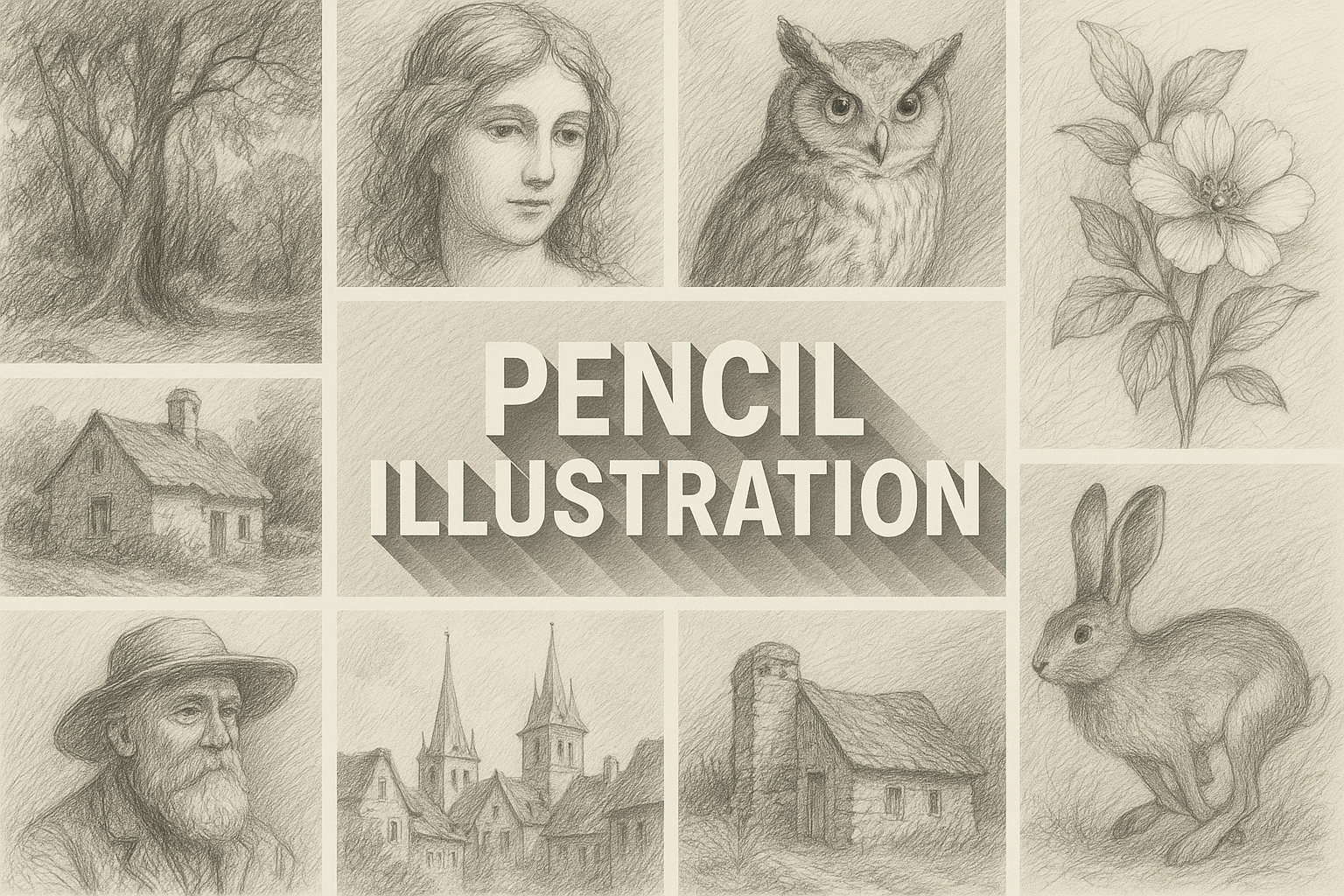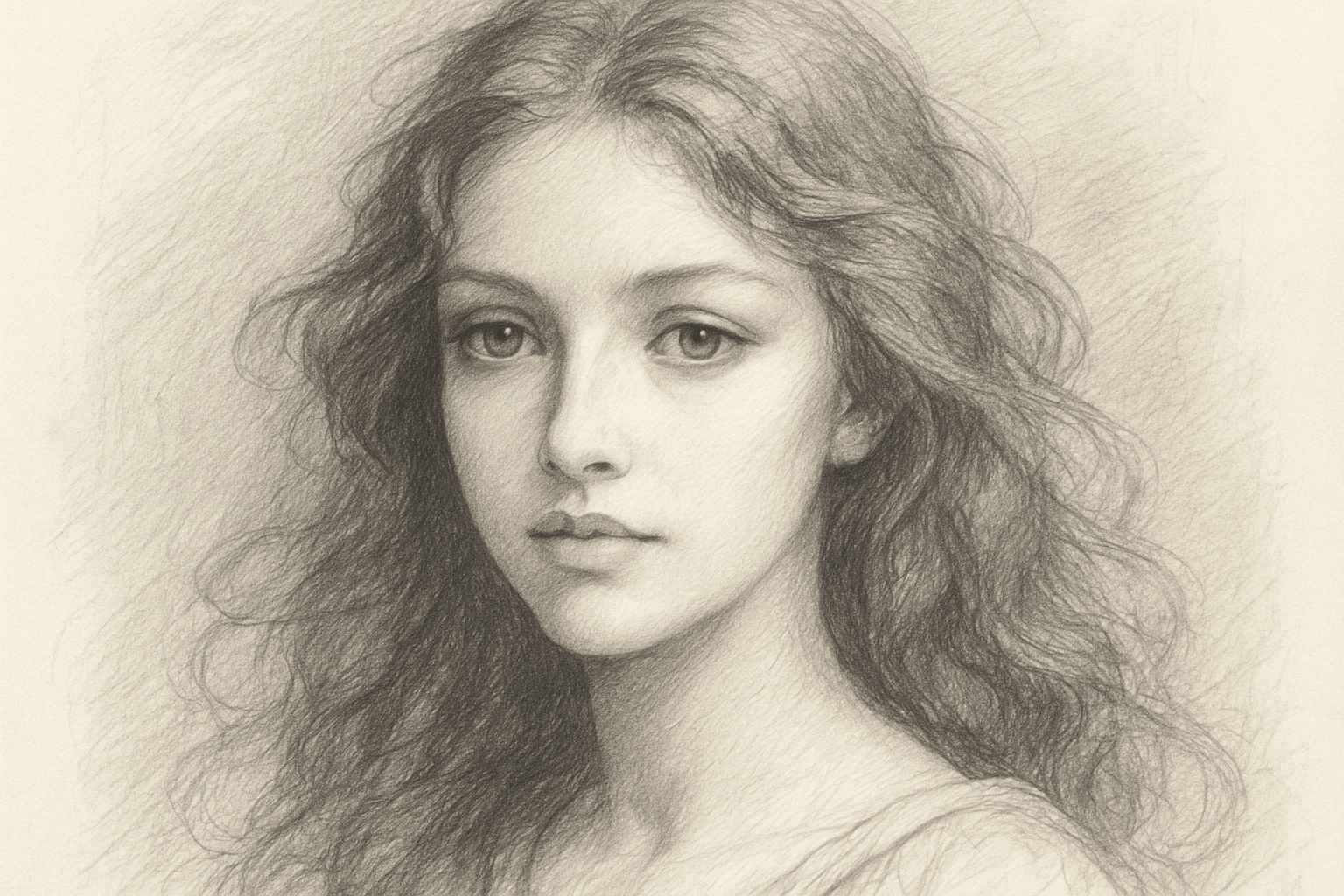
Pencil Illustration
Pencil illustrations have a hand-drawn look and feel. They are usually created with pencil and paper, but can also be done digitally. Pencil illustrations can be simple or complex, depending on the artist’s style.
AOI thinking about Pencil Illustration [+_~]-/
Overview and Quickfacts
Pencil illustrations are a type of art where the artist uses pencils to create their work. This type of art is often used for illustrations in books or magazines. Pencil illustrations can be very detailed and often have a realistic style.
Can understand it also, as:
Sketch, drawing, doodle.
Categorize it as:
Impressionism, Modernism
.: Dreaming :.
holds a HAIKU for the art style
:. Thought is power .:
Detailed Description
Pencil illustrations have been around since the 16th century. Famous artists who have used this medium include Albrecht DÃÂürer, Rembrandt, and Leonardo da Vinci. Pencil illustrations are created by using a pencil to draw or paint on a surface. The pencil can be used to create a variety of different effects, from very fine lines to large, bold strokes. One of the advantages of pencil illustrations is that they can be easily erased and redrawn. This makes them ideal for making corrections or for making changes to a design. Pencil illustrations can also be scanned and reproduced, which makes them easy to share with others. If you’re interested in creating your own pencil illustrations, there are a few things you’ll need to get started. First, you’ll need a pencil and a drawing surface. A sketchbook or drawing pad is a good option for a surface, as is Bristol board. You’ll also need a eraser and some pencil sharpeners. Once you have all of your supplies, you’re ready to start creating your own pencil illustrations!
.. beep, beep, beep ..
<START OF TRANSMISSION>
1. Pencil illustrations can be used to create a variety of different images, from portraits to landscapes. 2. Pencil illustrations can be created using a variety of different pencils, including graphite pencils, colored pencils, and even charcoal pencils. 3. Pencil illustrations can be created on a variety of different surfaces, including paper, canvas, and even wood. 4. Pencil illustrations can be enhanced with a variety of different mediums, including paints, inks, and even pastels. 5. Pencil illustrations can be created in a variety of different styles, from realistic to abstract. 6. Pencil illustrations can be used to create a variety of different effects, including shading, highlights, and even texture. 7. Pencil illustrations can be created in a variety of different sizes, from small to large. 8. Pencil illustrations can be framed and hung on walls as art, or even used as book or magazine covers. 9. Pencil illustrations can be scanned and reproduced in a variety of different ways, including as prints, posters, and even digital files. 10. Pencil illustrations can be sold as originals, or as prints or digital files. 11. Pencil illustrations can be used to create a variety of different products, including greeting cards, calendars, and even T-shirts. 12. Pencil illustrations can be used to create a variety of different advertising materials, including flyers, posters, and even billboards. 13. Pencil illustrations can be used to create a variety of different educational materials, including textbooks, workbooks, and even flashcards. 14. Pencil illustrations can be used to create a variety of different entertainment products, including games, toys, and even puzzles. 15. Pencil illustrations can be used to create a variety of different informational products, including pamphlets, brochures, and even website graphics. 16. Pencil illustrations can be used to create a variety of different promotional materials, including flyers, posters, and even postcards. 17. Pencil illustrations can be used to create a variety of different packaging designs, including boxes, labels, and even bags. 18. Pencil illustrations can be used to create a variety of different product designs, including toys, games, and even jewelry. 19. Pencil illustrations can be used to create a variety of different website graphics, including buttons, banners, and even backgrounds. 20. Pencil illustrations can be used to create a variety of different art prints, including posters, flyers, and even greeting cards.
<EOF>
.. robbel bob
Visual Examples from our image gallery
Coming soon, we are so slow .. might never come
Artists, Paintings, and more
(be aware, can be highly speculative)
Artists (be aware, speculation possible):
1. Albrecht DÃÂürer (1471-1528) 2. Leonardo da Vinci (1452-1519) 3. Rembrandt (1606-1669) 4. Michelangelo (1475-1564) 5. Raphael (1483-1520) 6. Jan van Eyck (1390-1441) 7. Hieronymus Bosch (1450-1516) 8. Pieter Bruegel the Elder (1525-1569) 9. Lucas Cranach the Elder (1472-1553) 10. Matthias GrÃÂünewald (1470-1528) 11. Domenico Ghirlandaio (1449-1494) 12. Sandro Botticelli (1445-1510) 13. Titian (1488-1576) 14. Caravaggio (1571-1610) 15. Diego VelÃÂázquez (1599-1660)
Artworks (be aware, speculation possible)
1. “The Hay Wagon” by American painter Andrew Wyeth (1937) 2. “The Harvesters” by Belgian painter Pieter Bruegel the Elder (1565) 3. “The Pencil Test” by American painter Edward Hopper (1933) 4. “The Sower” by French painter Jean-Francois Millet (1850) 5. “The Gleaners” by French painter Jean-Francois Millet (1857) 6. “The Haymakers” by French painter Jean-Francois Millet (1853) 7. “The Shepherdess” by French painter Camille Pissarro (1887) 8. “The Shepherd” by French painter Camille Pissarro (1886) 9. “The Haymakers” by British painter John Constable (1821) 10. “The Hay Wagon” by British painter John Constable (1821) 11. “The Cornfield” by British painter John Constable (1826) 12. “The Hay Wagon” by American painter Andrew Wyeth (1937) 13. “The Harvesters” by Belgian painter Pieter Bruegel the Elder (1565) 14. “The Pencil Test” by American painter Edward Hopper (1933) 15. “The Sower” by French painter Jean-Francois Millet (1850)
Epoch
The pencil illustration art style began in the early 1800s and became popular in the mid-19th century. It remained popular through the early 20th century and is still used today by some artists.
AI ART RESSOURCES (AKA, well Tools)
Helping tools -> predefined search links on other pages:











